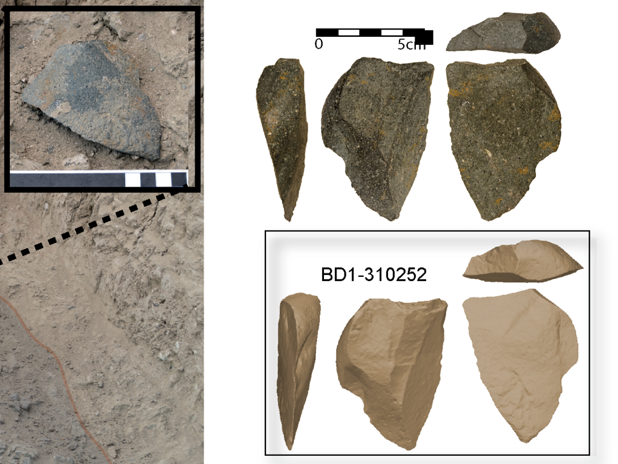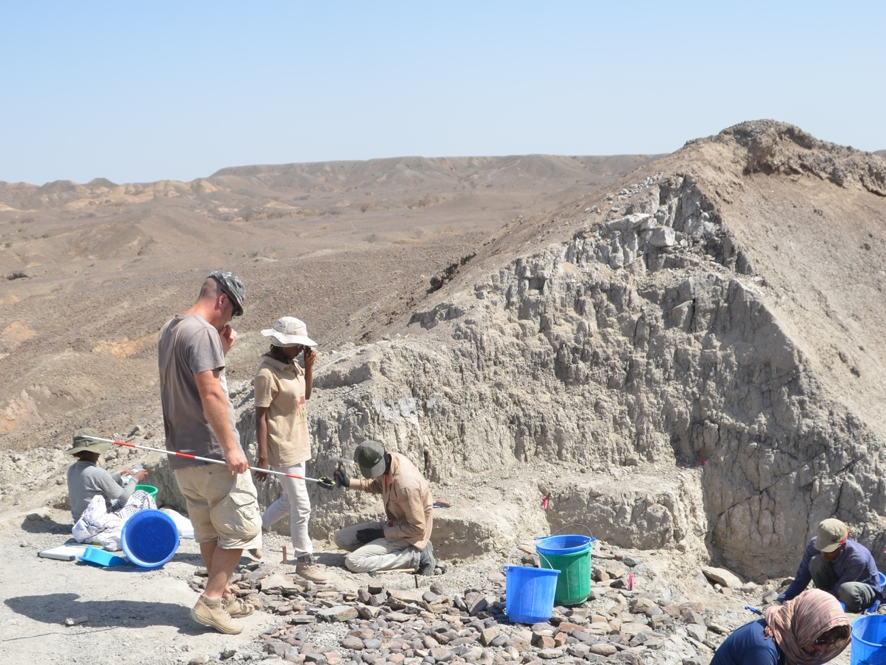Prehistoric humans invented stone tools multiple times, study finds
A collection of stone tools carved more than 2.58 million years ago have been found in Ethiopia

Your support helps us to tell the story
From reproductive rights to climate change to Big Tech, The Independent is on the ground when the story is developing. Whether it's investigating the financials of Elon Musk's pro-Trump PAC or producing our latest documentary, 'The A Word', which shines a light on the American women fighting for reproductive rights, we know how important it is to parse out the facts from the messaging.
At such a critical moment in US history, we need reporters on the ground. Your donation allows us to keep sending journalists to speak to both sides of the story.
The Independent is trusted by Americans across the entire political spectrum. And unlike many other quality news outlets, we choose not to lock Americans out of our reporting and analysis with paywalls. We believe quality journalism should be available to everyone, paid for by those who can afford it.
Your support makes all the difference.Prehistoric humans invented tools on multiple occasions, according to researchers who have found a collection of 327 stone weapons carved more than 2.58 million years ago.
This is the first evidence of ancient hominids sharpening stones to create specific tools, according to new research led by Arizona State University and George Washington University.
The collection of “Oldowan” tools – which are created by chipping off bits of stone – were found in the Afar region of north-eastern Ethiopia. They were probably made so our ancestors could carve up meat.
Before this discovery, the oldest example of an Oldowan tool was found in Gona in Ethiopia and was believed to be 2.56 million years old. It was widely believed this technology was invented once and then spread across the continent.
However, this latest study, published in Proceedings of the National Academy of Science, proves that theory wrong. Oldowan tools are now believed to have been invented many times by several hominid groups before becoming an essential human survival tool.
Kaye Reed research associate with Arizona State University’s Institute of Human Origins told The Independent: “This is the first time we see people chipping off bits of stone to make tools with an end in mind. They only took two or three flakes off, and some you can tell weren’t taken off quite right.
“The latest tools seem slightly different in the way they’re made from other examples.”
The tools were found near the oldest fossil attributed to the genus Homo, which is at an excavation site known as Bokol Dora 1 or BD 1 in Ethiopia. For five years researchers had been trying to find if there was a connection between the origins of our genus and the creation of systematic stone tool manufacture.
The breakthrough came when Arizona State University geologist Christopher Campisano saw sharp-edged stone tools sticking out of the sediments on a steep, eroded slope. It was here they went on to find hundreds of small pieces of chipped stones.

“These tools were dropped by early humans at the edge of a water source and then quickly buried. The site then stayed that way for millions of years,” said geoarchaeologist Vera Aldeias from the University of Algarve in Portugal.
Our ancestors were making and using tools for one million years before this latest find. Old hammering or “percussive” stone tools described as “Lomekwian” tools were first found in Kenya 3.3 million years ago.
Like monkeys and chimpanzees, these early hominids were using tools to hammer and bash food items like nuts and shellfish. However, something changed by 2.6 million years ago and our ancestors became more accurate and skilled at striking the edge of stones to make tools.
The BD 1 artefacts capture this shift.
“We expected to see some indication of an evolution from the Lomekwian to these earliest Oldowan tools,” said Will Archer of the Max Planck Institute for Evolutionary Anthropology in Leipzig and the University of Cape Town.
“Yet when we looked closely at the patterns, there was very little connection to what is known from older archaeological sites or to the tools modern primates are making,” he said.
This change coincided with a change in our ancestor’s teeth. As our ancestors began to process food prior to eating using stone tools, we start to see a reduction in the size of their teeth.
David Braun, an archaeologist with George Washington University and the lead author on the paper said; “Given that primate species throughout the world routinely use stone hammers to forage for new resources, it seems very possible that throughout Africa many different human ancestors found new ways of using stone artefacts to extract resources from their environment.
“If our hypothesis is correct then we would expect to find some type of continuity in artefact form after 2.6 million years ago, but not prior to this time period. We need to find more sites.”
Dr Reed said: “Our team is going back to the field early next year and we will do some more excavations of other localities and we’ll keep looking for more hominids that made the tool.”
Join our commenting forum
Join thought-provoking conversations, follow other Independent readers and see their replies
Comments